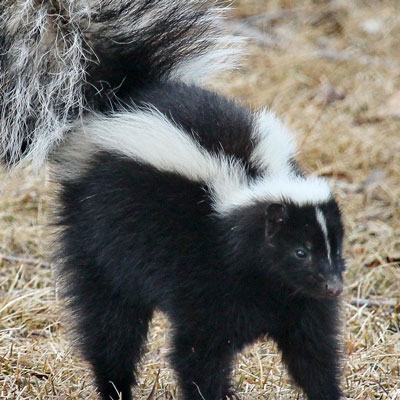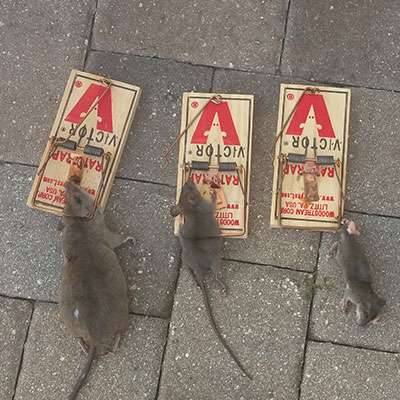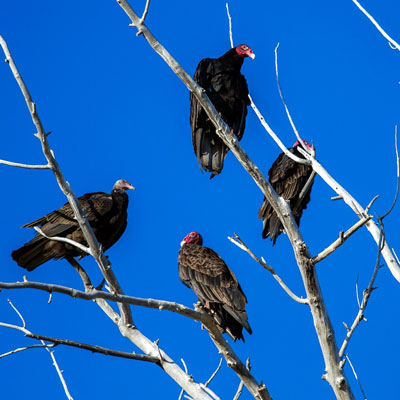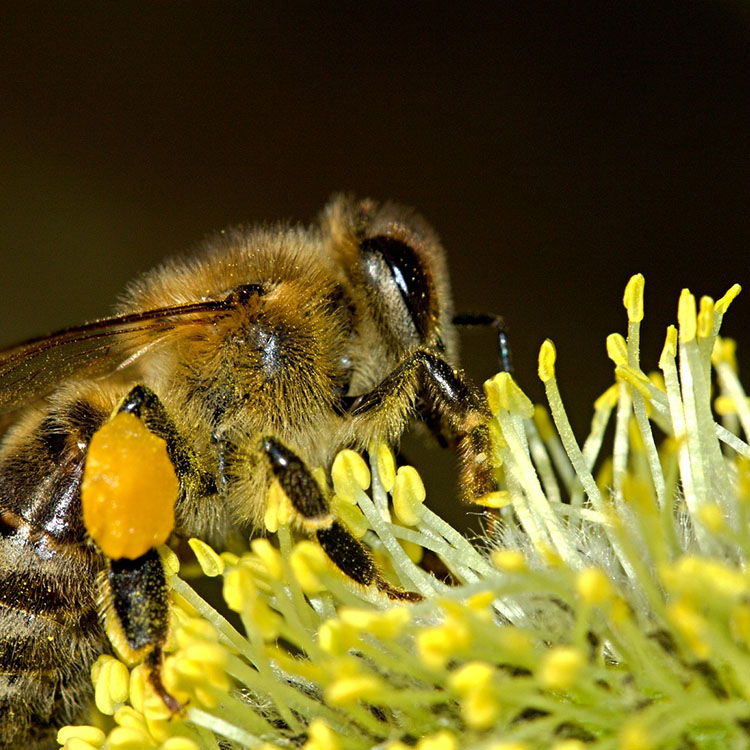Welcome to our Animal Control Guide for Getting Rid of Unwanted Wildlife Guests!
Have you got unwanted wildlife up in your attic or in your home?
Believe it or not, the attic you only use for old Christmas ornaments is actually an ideal location for wild animals to hide and build a nest! Here, they can seek refuge from natural predators and give their babies a home. For you, the homeowner, this is really a nuisance, as these animals can cause severe damage to your home. There are many types of animals that are known to try and build their homes in your attic, and the severity of damage they can cause can vary depending on the animal. With all that being said, we decided to build a website that can teach you all about the nuisance animals that can find their way into your home. Here, you can find tips, tricks, and preventative measures you can take to remove and keep these guys out of your home.
One of the main reasons that animals will seek shelter in an attic is the weather. Especially in the winter. The days and nights get colder and, just like you, animals just want to curl up with their families and keep warm. Your attic gives the perfect setting for this.
Animals in your attic can cause many different issues:
When animals move in the attic, you can hear it down in the house. It will sound like scuttling, shuffling, and dragging. This, especially late at night, can cause sleepless nights and distress. Especially if you have little ones who might claim to be hearing a “monster”.They can pose a serious health threat by chewing on wiring and leaving droppings. If you have rodents, you can even find where they get into the food you eat.
Of course, you will never have just one. Most times once an animal is up there, they will start to breed and multiply. Depending on what kind of animal it is, they may also be carrying diseases.
Many people think that if they can’t see any visible holes, their attic is safe from animals being able to enter. This isn’t true, as many of these creatures can squeeze through super tiny holes that you wouldn’t expect, or maybe can’t even find!
If you start to think you may have an unwanted guest in your attic, or are starting to hear weird noises coming from your walls or attic-space, you should take immediate action to try and fix the issue before it gets out of control.
Some of the more common nuisance animals you can find are below:
How to Get rid of Snakes:

Many people are afraid of these long and limbless reptiles. They do not have any exterior limbs, ears, or eyelids and their slick bodies have overlapping scales for protection, making them very different from many other lizards in the reptile kingdom.
Their diet consists mostly of meats, including rodents, birds, and other reptiles. Snakes lay eggs and are ectothermic, meaning that they rely on external factors (like the sun) to help control their body temperature, otherwise known as cold-blooded. Snakes are able to eat animals larger than their head because they are able to completely unhinge their jaw, this is because of the multitude of joints that are located in the jaw.
Snakes can be found pretty much everywhere around the world. There are few countries that they are not native, but if you’re looking to get away from snakes you should look into Antarctica, Ireland, Greenland, Iceland, or the Hawaiian Archipelago as snakes are not found in these countries. Well over 3,000 species of snakes have been documented. These all range in size, from the tiny Barbados Threadsnake measuring about 4 inches at full maturity, to the Reticulated Python measuring around 23 feet at full maturity. Most snakes are nonvenomous,
about 90 percent, but the snakes that are venomous can carry venom that is strong enough to kill humans – which doesn’t help with the common fear of the reptile. Most times, venomous snakes only use their venom when they are trying to kill prey or in the case that they feel threatened. Their flight-or-fight instinct kicks in, which is when, if they feel they can no longer run, they will turn around and strike.
Because they don’t have vertebrae, they can get into your home fairly easily. We gathered some ideas for you to put to use on how to get rid of snakes.
Follow the link to learn more about removing them from your home.
How to Get rid of Opossums:

Opossums are typically viewed as pretty darn cute, they aren’t aggressive at all and everyone jokes about “playing possum” when you’re scared. Seeing an opossum outside in your yard or across the road you probably think nothing of it, maybe even that it’s kind of cute, but when one gets inside your home it’s a whole new ballgame, and the only thing you can think of is getting it out!
Opossums are typically nocturnal animals. Their tails are one of their most outstanding features, as many believe they can use this to dangle from branches; however, while the tails are capable of grasping things, they would not have the strength to hold the weight of an adult opossum. Their diet typically consists of fruits and plants, but they will also eat meat if they have easy access to it. Much like raccoons, opossums are attracted to the leftover food you may have in your garbage. Opossums have adapted to live pretty much anywhere, so rather you live in the woods or in a busy suburb, you can more than likely find an opossum hanging around somewhere.
Opossums can be found all over the world, there are estimated around roughly 70 known species. The Pygmy Opossum is the smallest, measuring about 2-5 inches! Most commonly, the opossums you see get to be around the size of a small house cat. Because of their tiny size, opossums can easily fit through small holes in your house. Opossums have the capability of causing serious damage to a home, that is why removal is so important when it is noticed that opossums have gained entry to your home. In addition to structural damage they can cause, opossums can also have a negative impact on your health. Opossums are known carriers of the Bovine Tuberculosis bacteria, which can be harmful to both humans and animals, including pets. Symptoms of this disease include: cough, fever, lethargy, weakness, and even anorexia.
This is why it is important to remove opossums as soon as an issue is detected.
Follow the link to get more information on how to get rid of these opossums from your home.
How to Get rid of Skunks:

Skunks are natural scavengers and are always hunting for food sources. They will occasionally go near your trash cans to try and find any scraps that might be there. It is important to use caution when trying to get rid of these pesky animals, because their natural defense is to spray you with a foul-smelling mist. If you’ve never experienced the smell of this, count yourself lucky, it’s terrible; and if it gets on you, the only solution to get rid of it is a tomato sauce bath.
Their spray isn’t the only reason you have to be careful, skunks are also known to carry the rabies virus. Which is why not only must you be careful of your health, but there are certain laws in place that you must follow when dealing with these animals.
If you only have one or two skunks hanging around outdoors, the best way to deter them is to make sure your trash bins are sealed so they cannot access them and that there is no food scraps lying around. Most times, having a fence will also serve as a great way to keep them off your property; however, this animal is very agile and can slip through gaps any greater than two or three inches.
If you are having a skunk problem, Click here to gain some helpful tips on how to get rid of these guys while also avoiding taking a tomato bath yourself.
How to Get Rid of Rats:

One of the most common animals you can find in your attic is a roof rat. Roof rats are more common than you think, so don’t think you are alone in this issue. Rodents can squeeze through extremely small holes and chew almost anything to gain access to your home. It is very common to find their access tunnels through insulation in your attic and in wall cavities.
One of the best ways to identify a rat issue is the droppings they leave behind -gross, I know. Their poop typically looks like tiny grains of brown rice and is scattered everywhere.
Find out more about how to identify Rat Poop using this handy chart.
They are active both day and night, but most people hear their scurrying back and forth late at night. Most people use rat poison to kill these pests, but this is only a temporary fix to what could be a permanent problem. The only way to ensure that you get all rodents out of your home is to identify how they are gaining access, as well as any other potential entry points, and seal them. Then, use traps to catch and dispose of those left inside. Poison is still not recommended, as the rodent can eat the poison and could potentially fall down a crevice where you cannot get to it and you are left with a decaying smell.
Click here for more advice and tips on how to get rid of pesky rats.
How to Get Rid of Mice:

Mice prefer suburban life with humans rather than taking risks in the wild, so having mice in a city home is quite common. Most times mice gain their access from very small holes on the exterior of the home. They can climb up the walls and squeeze into tiny holes, gaining access to the interior of the home.
Since mice are so tiny, it is difficult to pick up on any noises from them. Your best option for identifying an issue is to look for poop in your home or in the attic. The poop typically looks like small brown grains of rice. The best way to fix your problem is to locate their main access point, as well as any other potential entryways, and seal them up. Then you can trap the rodents’
leftover inside.
If you have mice in attic, click here to find out more on how to get rid of mice for good.
How to Get Rid of Bats:

Bats can be a very common, and very serious, issue to deal with in your home. And no, not because they might turn into vampires, although if they do, please call someone. That’s a bigger issue. These animals typically gain access to your home by squeezing through very small holes and normally fly into the roof from gaps all along the roof line. This is especially common in barrel tile roofing.
Aside from seeing them flock out at dusk, one of the very first signs of bats in your attic is the smell of their droppings, called guano. Guano can accumulate in large quantities and causes a very serious threat to your health. Bat guano is known for carrying fungus that causes upper respiratory infections.
Since bats are nocturnal, you may see them flying out of your roof at night, or you may even occasionally hear them rustling around. While many products claim to deter bats, they are frauds. Bats must be physically removed from the area that they are roosting in. The best way to do this is by one-way exclusions.
Click here for more information and advice on how to get rid of bats.
How to Get Rid of Squirrels:

Squirrels are the most common type of animal you will find in your attic. These cute little guys love climbing, and really love climbing right into your home! Squirrels can fit into pretty small holes, but also have the ability to chew larger holes if necessary.
Squirrels have a knack for chewing on things, as you might’ve seen from watching them in nature, but this can be a big problem in your attic! They will chew literally everything, from wood to electrical wires. This can cause a fire hazard, which is why it’s important to get these guys out as soon as possible.
Squirrels are not nocturnal, so you will more than likely hear them in the morning time. They are getting up and ready for the day right around the same time as you! The best way to get rid of these little guys is to capture them and relocate them, and then seal up any potential access points so no other animals can get in.
Follow this link for more advice on how to get rid of squirrels.
How to Get Rid of Birds:

Bird Control is a very common service needed by residential and commercial properties. For commercial properties, birds have the potential to cause billions of dollars worth of damage annually. Most of the damage is caused from their droppings from when they roost on the building structures, the most common type of birds associated with this habit are Pigeons and Starlings. We offer many options for bird removal and repellant, including: bird netting, bird spiking, bird fogging, and many other out-of-the-box ideas for taking care of your bird problem.
Birds can also cause problems for homeowners, as they will start creating their nests in the vents on your home. You can expect to see this kind of behavior in the spring months as the birds are preparing a place to have their babies. The first signs of unwanted birds would be if you start hearing strange noises coming from the vent system, if the problem is not corrected right away and the babies hatch you may then also experience a foul odor as a product of the babies. It's very important to get control of any bird issues as soon as they are discovered so as to avoid having any unnecessary damage done to your home. We specialize in bird control and removal and can solve any type of issue you are having, rather they are in your home vent or roosting on your business building we have a unique solution to help!
Follow this link for more advice on how to get rid of Birds.
How to Get Rid of Armadillos:

I remember when I was about six years old, I was playing in the front yard with my dad and this mini dinosaur looking creature was in the neighbor's yard digging a big hole, I went running towards it because I had never seen anything like that and my dad grabbed me and told me to never touch them! At the time, I did not know why, but now I do. Armadillos have very sharp claws and strong legs that help them dig. Their bodies are made of a strong material that’s essentially like body armor, and this is their main defense. They tend to dig holes and lay in them, because their stomachs are very tender.
Armadillos have become a huge nuisance. They dig up…everything! Their burrows can be very large and they are a danger to pets and children. Armadillos can also carry leprosy! They are the only animals (besides humans) that can live while having this disease. Armadillos have horrible eyesight, so they use a ridiculously good sense of smell to hunt and they eat insects and that is another reason for their incessant digging. When you’re out working in your yard, tripping over a big armadillo burrow and hurting your ankle. Not to mention having to redo all of your flower beds because they’ve been destroyed! The best solution to an armadillo issue is to call us! We are a humane company and we will trap and relocate them back to their natural environment!
Follow this link for more advice on how to get rid of Armadillos.
How to get rid of Bees & Other Stinging Insects:

A common issue in most areas are bees. There are multiple species and in most cases a homeowner is usually not dealing with a bee at all but a wasp or hornet colony. The Yellow Jacket being the most aggressive type of wasp, closely followed by the Paper Wasp. Bee or wasp removal is not a easy job and should be handled by professionals to avoid multiple stings. Even bees, such as the Africanized honey bee is aggressive and can leave an untrained homeowner with several hundred stings from one colony alone.
Follow this link for more advice on how to get rid of Bees & Stinging Insects.
How to Get Rid Of Dead Animals:

In case you are experiencing a terrible smell from your home, there exists an opportunity it might possibly be described as a dead animal evoking the smell. Wild critters reside in and die in homes, attics, basements, crawlspaces and really anywhere that you can think of! Typical animals that we deal with include rats, mice, rodents, opossums, and raccoons.
It is my occupation, along with so the occupation of almost any professional annoyance wildlife operator, to get and get rid of the lifeless and super stinky dead animals. There are a few tricks to the trade in finding the dead bodies and then properly disposing of them. And of course we need to make sure we get rid of that HORRIBLE odor and all the bacteria that is left behind!
Follow this link for more advice on how to get rid of Dead Animals.
How to Get Rid of Raccoons:

Raccoon removal is another common wildlife issue we handle here at 24/7 Wildlife Control. Not only are they extremely intelligent animals, but they have adapted well to living in highly populated areas. Raccoons will do anything and everything to obtain food including digging up yards and scavenging through your trash.
Removing them is crucial as they will gain access to your attic for shelter especially when they have pups. Raccoons can do a lot of damage in a very small period of time. They should be removed as soon as you discover they have entered your home. Raccoons are responsible for more than $2 billion a year in insurance claims making them one of the most destructive animals in Florida. Some of the damage they are responsible for can include tearing up your ductwork, pulling down soffit, ripping up shingles, damage to your air vents, and leaving behind feces in your insulation. They also pose a threat to your family’s health. They carry numerous diseases that can be spread easily to humans.
Raccoon infestation is on the rise! Don’t let them take up residence in your home another night!
Follow this link for more advice on how to get rid of Raccoons.